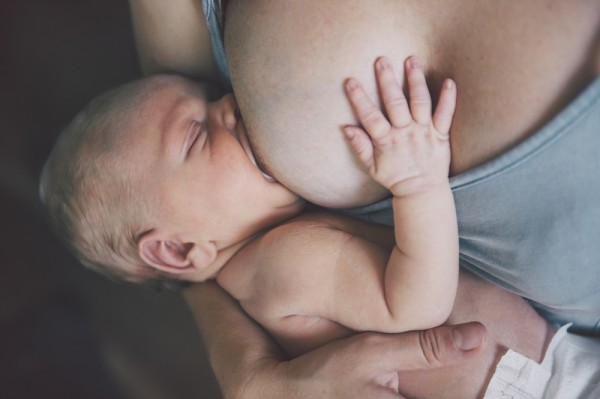World Breastfeeding Week is in full swing, and we want to talk about it!
Breastfeeding is not only one of the most natural ways to feed your infant, but the human milk is actually pretty amazing in itself.
Here are nine ways breastfeeding and the human milk is pretty special:
1. Breast milk is perfectly tailored to your individual baby’s needs
Breast milk has the right amount of protein, fat and carbohydrate to meet a baby’s growing need at each stage. Breast milk is a living fluid; it is not static or uniform.
It is perfectly tailored to a baby’s need at each stage. Therefore, a mother that delivers her baby at 34 weeks gestation produces breast milk made for a preterm infant, whereas a mother that delivers her baby at 40 weeks gestation or term produces milk for a full term baby. Pretty darn amazing.
2. Breast milk is a natural immunisation for your baby
An immune system exists in breast milk (say WHAT?). It consists of many substances that help prevent infection directly and are anti-inflammatory agents, or enhance the growth of other substances that help reduce infections.
This helps to reduce the risk of respiratory, ear and gastrointestinal infections for a baby. Human milk contains a substance called bifidus factor, which promotes the growth of good bacteria in the intestinal tract of a baby, helping to destroy other disease producing bacteria.
3. Colostrum ‘Golden Milk’ is perfectly tailored to a new-born baby’s needs
Colostrum is perfectly tailored to a new-born baby’s needs, as it helps a baby to make the transition from receiving nutrition through the placenta while in utero, to receiving nutrition through its immature digestive system while breastfeeding.
Colostrum is a natural laxative which helps to eliminate bilirubin from a baby’s body. The elimination of bilirubin from a baby’s body helps to reduce the incidence and severity of jaundice. Therefore, frequent, and regular breastfeeding is important in the early stages. Colostrum is also loaded with antibodies; cells that help to destroy viruses, bacteria and other microorganisms.
4. Breast milk composition adjusts to climate and environmental factors
Breast milk changes its nutritional profile as a baby grows and develops. It can even change from feed to feed. If a breastfeeding woman lives in a hot climate, they will have more water in their milk to keep their baby hydrated.
If a baby is unwell due to a virus, bacteria or microorganisms, their mother’s breast milk composition will change to fight against it.
5. Human milk contains substances that promote sleep and calmness
Human milk contains substances that promote sleep and calmness in babies and calmness in mothers. Breastfeeding causes the release of prolactin and oxytocin. Oxytocin is often known as the ‘bonding hormone’.
While oxytocin and prolactin both promote a feeling of calmness and relaxation, oxytocin is also a hormone that causes uterine contractions. The release of oxytocin while breastfeeding speeds uterine involution.
6. Human milk helps to reduce the development of allergies, eczema and asthma
Providing a child with human milk helps to reduce the change of a child developing allergies, eczema and asthma.
Research has shown that exclusively breastfeeding a baby for four to six months may help reduce the risk of these allergic diseases. This is most important in families with a strong history of these problems.
7. Breastfeeding helps mothers to lose weight
At least 10 pounds of the weight gained during pregnancy is fat stores that are laid down to enable a woman to breastfeed. The 10 pounds of stored fat allows a breastfeeding woman to continue to nurse her baby while eating an extra 300-500 kilocalories a day, and still slowly lose weight over the first six months of breastfeeding.
Women who choose not to breastfeed will have to use diet and exercise in the postnatal period to lose those extra 10 pounds.
8. Breastfeeding helps to develop a baby’s jaw and face muscles
Breastfeeding helps to develop a baby’s jaw and face muscles, through the unique suck, swallow and breathing technique a baby uses to breastfeed. As breastfed babies use different muscles when feeding at the breast, this helps to create and form a baby’s jaw and teeth development.
This is due to the sucking action used during breastfeeding, which involves complex motions of the facial muscles and tongue, improving the facial development and the shape of a baby’s palate.
9. Breastfeeding and Human milk play a role in preventing other diseases
Research on the long-term effects of breastfeeding and the health of a child has shown breastfeeding may have a protective effect on diseases such as sudden infant death syndrome, Diabetes mellitus, Crohn's disease and ulcerative colitis, Lymphoma, Celiac Disease, elevated cholesterol level in adults, and obesity.
Breastfeeding and human milk are uniquely designed to nourish and aid development of a child. As human milk is so uniquely designed by nature, it makes sense that a child’s body would function in a healthier way throughout the child’s entire life.













